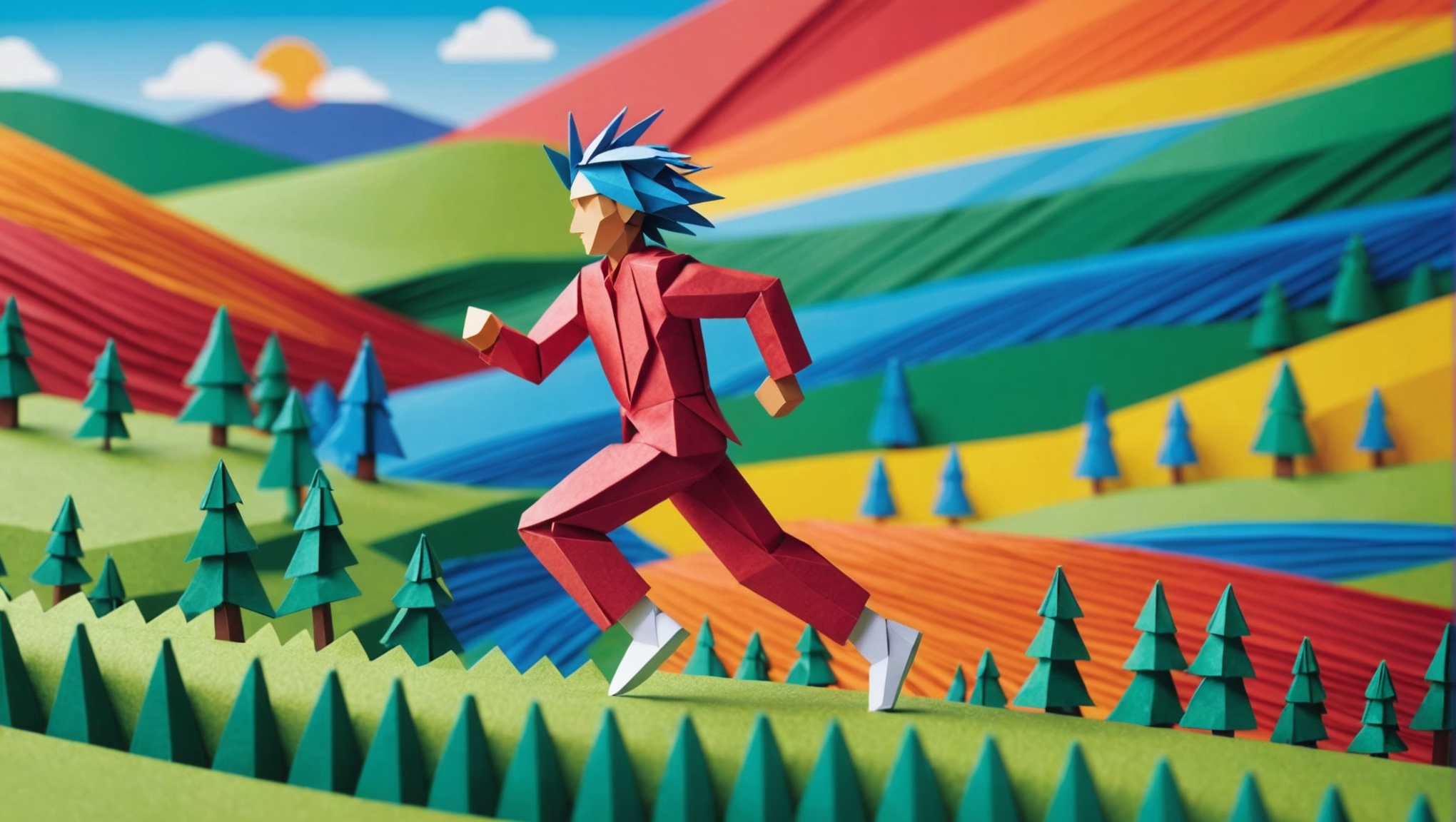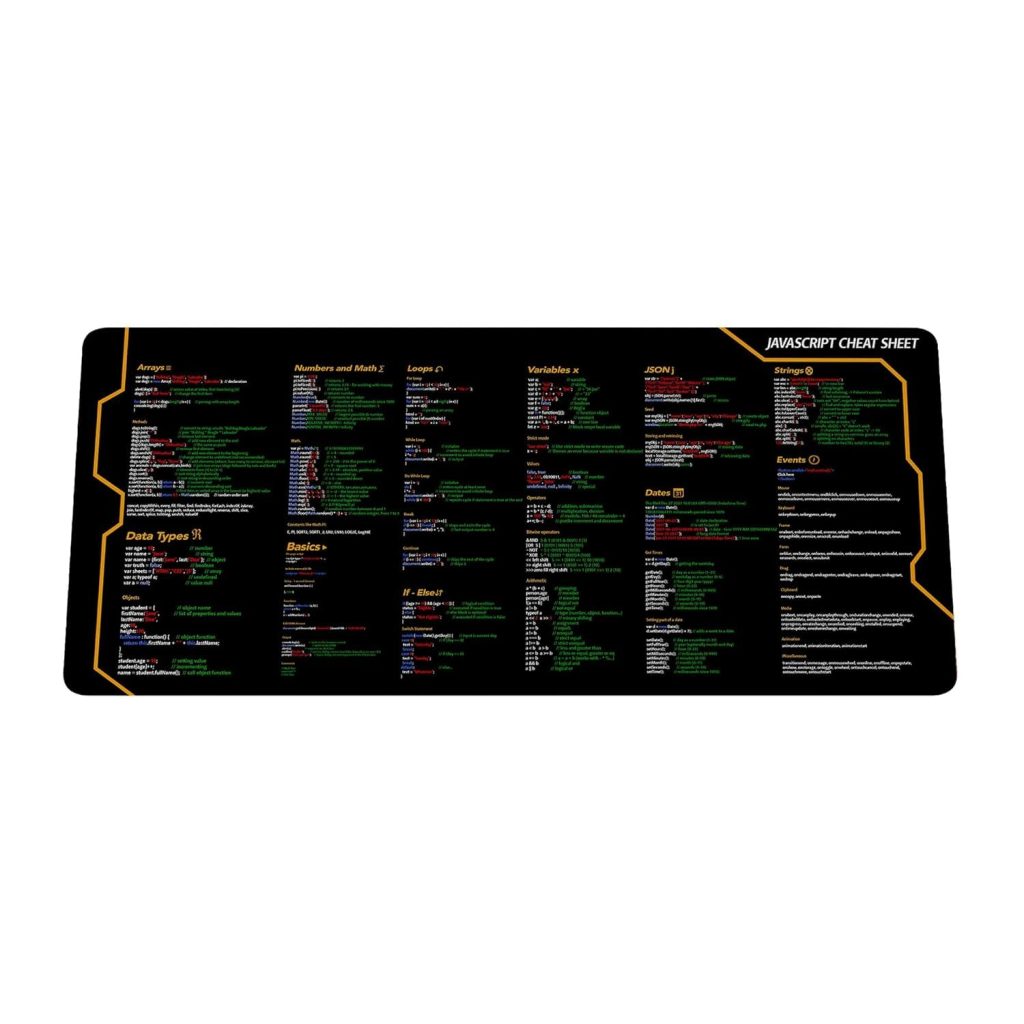
Pygame animation is a powerful feature that allows developers to create dynamic and visually engaging experiences. At its core, animation in Pygame involves updating the screen repeatedly, rendering images, or sprites in a sequence to create the illusion of motion. That’s achieved through a process called double buffering, where the newly drawn frame is prepared off-screen before being displayed, minimizing flicker and providing smoother animations.
To begin, you’ll need a basic understanding of the Pygame main loop. This loop is fundamental to any Pygame application and runs continuously until the user decides to exit. Within this loop, you’ll check for events, update object positions, and render the scene. The typical structure of your main loop might look something like this:
import pygame
import sys
# Initialization
pygame.init()
screen = pygame.display.set_mode((800, 600))
clock = pygame.time.Clock()
# Main loop
while True:
for event in pygame.event.get():
if event.type == pygame.QUIT:
pygame.quit()
sys.exit()
# Update logic here
# Render
screen.fill((0, 0, 0)) # Clear screen with black
# Draw objects here
pygame.display.flip() # Update the full display Surface to the screen
clock.tick(60) # Limit the frame rate to 60 FPS
Animation in Pygame often involves a collection of frames that represent different stages of your animation. These frames can be individual images or a sprite sheet, which is essentially a single image containing multiple frames. Using a sprite sheet is efficient as it reduces the number of texture binds required during rendering, which can significantly improve performance.
Once you have your frames, you can create an animation by cycling through these frames at a specified rate. This can be accomplished with a simple timer that updates the current frame based on the desired frames per second (FPS). Below is a refined example illustrating this concept:
# Load images for animation
sprite_sheet = [pygame.image.load(f'frame_{i}.png') for i in range(1, 6)]
current_frame = 0
frame_count = len(sprite_sheet)
animation_speed = 0.1 # Adjust this value for different speeds
last_update = 0
# Inside main loop
current_time = pygame.time.get_ticks()
if current_time - last_update > 100 * animation_speed: # Change frame every 100ms
last_update = current_time
current_frame = (current_frame + 1) % frame_count
# Render current frame
screen.blit(sprite_sheet[current_frame], (x_position, y_position))
Timing is important for achieving smooth animations, and careful management of state changes can eliminate undesirable flickers. It’s also important to conceptualize how your animations interact with game physics and user input, ensuring a cohesive experience as your game elements come to life on the screen.
As you continue to build your animations, you’ll discover that tweaking parameters like frame rate and timing can significantly impact the perceived smoothness of motion. Experimenting with these elements will lead to a deeper understanding of how to effectively implement animation within your Pygame projects.
Creating Sprites and Animation Frames
Creating sprites and animation frames in Pygame can significantly enhance the user experience by adding life to your game objects. The process begins with the creation of sprite objects, which are essentially representations of your game entities that can be easily manipulated and animated. Pygame provides a convenient Sprite class, which you can inherit to create your own sprite types.
To define a sprite, you’ll typically want to implement at least the following methods: __init__() for initializing the sprite and update() for defining how the sprite behaves on each frame. Here’s a basic implementation:
class MySprite(pygame.sprite.Sprite):
def __init__(self, image, position):
super().__init__()
self.image = image
self.rect = self.image.get_rect(topleft=position)
def update(self):
# Logic to update sprite position or animation
pass
Once you have your sprite class set up, you can create instances of your sprite and add them to a Group. This allows you to manage multiple sprites efficiently. For instance:
all_sprites = pygame.sprite.Group()
my_sprite_image = pygame.image.load('my_sprite.png').convert_alpha()
my_sprite = MySprite(my_sprite_image, (100, 150))
all_sprites.add(my_sprite)
Next, to create animation frames, think using a sprite sheet where each frame of animation is packed into a single image. The process of extracting each frame can be automated using the following function:
def load_sprite_sheet(filename, frame_width, frame_height):
sprite_sheet = pygame.image.load(filename).convert_alpha()
frames = []
for y in range(0, sprite_sheet.get_height(), frame_height):
for x in range(0, sprite_sheet.get_width(), frame_width):
rect = pygame.Rect(x, y, frame_width, frame_height)
image = pygame.Surface(rect.size, pygame.SRCALPHA)
image.blit(sprite_sheet, (0, 0), rect)
frames.append(image)
return frames
After loading the frames, you can set up the animation behavior in your sprite’s update method to cycle through the frames. Below is an example of integrating frame handling into your sprite class:
class AnimatedSprite(pygame.sprite.Sprite):
def __init__(self, frames, position):
super().__init__()
self.frames = frames
self.current_frame = 0
self.last_update = 0
self.animation_speed = 100 # milliseconds
self.image = self.frames[self.current_frame]
self.rect = self.image.get_rect(topleft=position)
def update(self):
current_time = pygame.time.get_ticks()
if current_time - self.last_update > self.animation_speed:
self.last_update = current_time
self.current_frame = (self.current_frame + 1) % len(self.frames)
self.image = self.frames[self.current_frame]
In this example, the AnimatedSprite class cycles through its frames based on the time elapsed. To render your animated sprite, you simply need to call the update method within your main loop and draw the sprite group:
# Inside main loop all_sprites.update() # Call update on all sprites screen.fill((0, 0, 0)) # Clear the screen all_sprites.draw(screen) # Draw all sprites pygame.display.flip() # Update the screen
By using sprite classes and groups, you can organize your animation frames and have a modular system where each sprite manages its own rendering and updates. This not only leads to clearer code but also simplifies the process of integrating more complex behaviors and interactions as your game grows.
Implementing Movement Mechanics
Implementing movement mechanics in Pygame is a fundamental aspect that enhances gameplay by allowing characters and objects to interact with the game world. The essence of movement lies in updating the position of your sprites based on input or game logic, ensuring they behave in a predictable and engaging manner. In this section, we will explore the various ways to implement movement mechanics efficiently.
The primary approach to movement in Pygame involves updating the position of sprite objects in each iteration of your game loop. First, you need to define how your sprite responds to input or internal logic. This can be achieved by manipulating the `rect` attribute of the sprite, which determines the position and size of the sprite on the screen. Below is a basic example demonstrating how to move a sprite using keyboard input:
class PlayerSprite(pygame.sprite.Sprite):
def __init__(self, image, position):
super().__init__()
self.image = image
self.rect = self.image.get_rect(topleft=position)
self.speed = 5 # Set the movement speed
def update(self):
keys = pygame.key.get_pressed() # Get current state of keyboard
if keys[pygame.K_LEFT]:
self.rect.x -= self.speed # Move left
if keys[pygame.K_RIGHT]:
self.rect.x += self.speed # Move right
if keys[pygame.K_UP]:
self.rect.y -= self.speed # Move up
if keys[pygame.K_DOWN]:
self.rect.y += self.speed # Move down
With this `PlayerSprite` class, your sprite will respond to the arrow keys, moving it in the corresponding direction. We define a `speed` variable that controls how far the sprite moves each frame. Inside the `update` method, we check for key presses and adjust the `rect` position accordingly.
To integrate this class into your game, instantiate the player sprite and include a call to the `update` method inside your main loop. Here’s how you can do that:
# Load player image and create sprite
player_image = pygame.image.load('player.png').convert_alpha()
player_sprite = PlayerSprite(player_image, (400, 300))
all_sprites.add(player_sprite)
# Inside main loop
all_sprites.update() # Call update on all sprites
screen.fill((0, 0, 0)) # Clear the screen
all_sprites.draw(screen) # Draw all sprites
pygame.display.flip() # Update the screen
However, merely allowing movement isn’t enough for a polished game experience. You may want to implement boundaries to restrict movement within the window. This can be achieved by adding conditions to the `update` method:
def update(self):
keys = pygame.key.get_pressed()
if keys[pygame.K_LEFT] and self.rect.left > 0:
self.rect.x -= self.speed
if keys[pygame.K_RIGHT] and self.rect.right 0:
self.rect.y -= self.speed
if keys[pygame.K_DOWN] and self.rect.bottom < 600: # Assuming screen height is 600
self.rect.y += self.speed
The above conditions ensure that the player sprite does not move outside the visible area of the screen. This not only improves the gameplay experience but also prevents bugs related to sprite positioning off-screen.
You can further enhance movement mechanics by incorporating acceleration and deceleration to simulate more realistic motion. This can be done by modifying the speed based on how long a key is pressed. Here’s a simple adjustment to the `update` method to implement acceleration:
def update(self):
keys = pygame.key.get_pressed()
if keys[pygame.K_LEFT]:
self.speed = max(self.speed - 0.1, 1) # Accelerate left
if keys[pygame.K_RIGHT]:
self.speed = min(self.speed + 0.1, 10) # Accelerate right
else:
self.speed = 5 # Reset to normal speed when no key is pressed
# Boundaries and position adjustments here...
In this example, the sprite accelerates in the direction of movement while a key is being pressed. This creates a sense of weight and responsiveness to the controls, resulting in more engaging gameplay.
Finally, consider adding diagonal movement support by allowing combinations of directions. This can be implemented seamlessly by checking multiple keys simultaneously, leading to smoother and more fluid movement styles in your game:
def update(self):
keys = pygame.key.get_pressed()
if keys[pygame.K_LEFT]:
self.rect.x -= self.speed
if keys[pygame.K_RIGHT]:
self.rect.x += self.speed
if keys[pygame.K_UP]:
self.rect.y -= self.speed
if keys[pygame.K_DOWN]:
self.rect.y += self.speed
By applying these principles and techniques, you can effectively implement comprehensive movement mechanics that enhance the interactivity and enjoyment of your Pygame projects. Remember, the key to great gameplay often lies in the subtlety of movement and the responsiveness of your controls.
Integrating User Input for Dynamic Control
Incorporating user input into your Pygame animations is essential for creating dynamic and interactive gameplay experiences. Integrating various forms of input allows players to have control over the game elements, making animations feel responsive to their actions. This section will delve into how to effectively capture user input and translate it into movement and animation mechanics within your Pygame project.
To begin with, the primary method for capturing user input in Pygame is through the event handling system and the keyboard state monitoring. Inside your main loop, you can check for a range of input events, from keyboard presses to mouse movements. The structure for retrieving this information looks as follows:
for event in pygame.event.get():
if event.type == pygame.QUIT:
pygame.quit()
sys.exit()
if event.type == pygame.KEYDOWN:
if event.key == pygame.K_SPACE:
print("Space key pressed!")
Above, we handle a basic event where the space key press is detected, launching any desired action—like triggering an animation. However, many games require continuous input detection, such as while a key is held down. For this purpose, using pygame.key.get_pressed() provides a snapshot of the current state of all keyboard keys, allowing for fluid movements or actions based on whether keys are actively pressed:
keys = pygame.key.get_pressed()
if keys[pygame.K_LEFT]:
player.rect.x -= player.speed # Move left if left arrow is pressed
if keys[pygame.K_RIGHT]:
player.rect.x += player.speed # Move right if right arrow is pressed
Next, let’s enhance our sprite movement by integrating user input for both translation and animation. Imagine you have a player-controlled character that animates according to its movement direction. In this case, you could adjust the player sprite’s image based on the direction of movement. Here’s how you can update the sprite class:
class PlayerSprite(pygame.sprite.Sprite):
def __init__(self, images, position):
super().__init__()
self.images = images # Dictionary containing images for different directions
self.current_image = self.images['down']
self.rect = self.current_image.get_rect(topleft=position)
self.speed = 5
def update(self):
keys = pygame.key.get_pressed()
if keys[pygame.K_LEFT]:
self.rect.x -= self.speed
self.current_image = self.images['left']
elif keys[pygame.K_RIGHT]:
self.rect.x += self.speed
self.current_image = self.images['right']
elif keys[pygame.K_UP]:
self.rect.y -= self.speed
self.current_image = self.images['up']
elif keys[pygame.K_DOWN]:
self.rect.y += self.speed
self.current_image = self.images['down']
# Render the current image
self.image = self.current_image
In this updated class, we maintain a `current_image` that changes based on the direction of player movement. The update method captures the key presses and updates the sprite position and image accordingly. This creates a seamless experience as the animation visually reflects the player’s input.
Moreover, to achieve fluidity in animations, you might want to combine the input handling with sprite animations, particularly when the player is in motion. To illustrate, think maintaining separate animations for moving left, right, up, and down. You can utilize frame cycling for each direction, similar to how we previously discussed:
class AnimatedPlayerSprite(PlayerSprite):
def __init__(self, animation_frames, position):
super().__init__(animation_frames, position)
self.animation_speed = 100 # milliseconds
self.last_update = 0
self.current_frame = 0
def update(self):
current_time = pygame.time.get_ticks()
super().update() # Call parent update to handle movement and direction
if current_time - self.last_update > self.animation_speed:
self.last_update = current_time
self.current_frame = (self.current_frame + 1) % len(self.images[self.current_direction])
self.image = self.images[self.current_direction][self.current_frame]
With this enhancement, your sprite will not only move according to user input but will also animate its movement by cycling through frames corresponding to the current direction. This combination of keyboard input, movement logic, and animation gives life to your sprites, responding dynamically to player actions.
In scenarios where you require more complex interactions, such as responding to mouse input or different device controls, you can extend this input system even further. Utilize pygame.mouse.get_pos() to determine the mouse cursor’s position or pygame.mouse.get_pressed() to check for mouse button presses, allowing additional layers of interactivity within your animations.
By carefully designing your input handling mechanics, you create an engaging and responsive gaming experience where players feel truly in control of their character’s actions and animations. The synergy between user input and animations can elevate your game, making it more immersive and enjoyable for users at all skill levels.
Optimizing Animation Performance
Optimizing animation performance in Pygame especially important for ensuring smooth, responsive gameplay. Even with efficient drawing techniques and well-structured code, performance issues can arise when handling multiple sprites, high frame rates, and complex animations. Here, we will explore various strategies to imropve the performance of your animations to achieve that coveted fluidity.
One of the primary ways to optimize animation performance is to minimize the number of draw calls. When several sprites are drawn individually, it can lead to considerable overhead. To mitigate this, utilize Pygame’s SpriteGroup class to batch sprite rendering. By adding all your sprites to a group, you can call draw on the group, which renders all sprites in a single call rather than multiple individual ones. Here’s a modification to our main loop to demonstrate this:
# Drawing sprites using SpriteGroup all_sprites.draw(screen) # Draw all sprites in one call
Another significant optimization can be achieved by managing your frame rate effectively. Pygame allows you to control the frame rate using the pygame.time.Clock module. Setting a reasonable frame cap can help maintain consistent performance across different hardware setups. A common practice is to limit your game to 60 frames per second (FPS):
# Inside the main loop clock.tick(60) # Limit the frame rate to 60 FPS
In addition to frame rate management, consider the size of your images and animations. Large textures can consume significant memory bandwidth, affecting performance adversely, especially when many sprites are on-screen. Optimize your images by reducing their resolution as much as feasible and using formats that offer better compression. Pygame supports both .png and .jpg files, but for transparent images, .png is preferable due to its alpha channel support.
Another technique pertains to the usage of dirty rectangles. This method involves only redrawing the portions of the screen that have changed instead of the entire screen. By keeping track of which rectangles need updates, you can significantly reduce the rendering workload. Pygame simplifies this with its own dirty rectangle management techniques—if your sprites or background change, make sure to update only those specific areas:
# Example of updating only the dirty rectangles pygame.display.update(dirty_rects) # Update only the specified areas
Furthermore, when dealing with sprite animations, think limiting the complexity of your animations. Using fewer frames in your sprite sheets can reduce memory usage and improve performance. Instead of a high-resolution animation that captures exquisite detail, sometimes a simple two or three-frame animation can suffice. You can still achieve the illusion of motion by adjusting the timing of frame swaps.
Another optimization technique involves using the Pygame Surface caching. If your animations use the same images repeatedly, store these surfaces in variables rather than loading them every frame. This saves time and resources as loading images is one of the more expensive operations in terms of performance:
# Cache surfaces instead of loading them every frame
player_image = pygame.image.load('player.png').convert_alpha() # Load once
Lastly, don’t forget to profile your game. Tools like cProfile can help identify bottlenecks in your code and offer insights on where to focus your optimization efforts. By analyzing your main loop’s performance, you can determine if certain areas need refactoring or if you’re pushing the limits of your current hardware capabilities.
By implementing these techniques—batch rendering, frame rate management, image optimization, dirty rectangle updates, caching, and profiling—you can greatly enhance your animation performance in Pygame. These strategies not only contribute to a more fluid gaming experience but also ensure your game can scale effectively to handle more sprites, increasing the overall fun and engagement for players.
Debugging Common Animation Issues
Debugging animation issues in Pygame can be a challenging endeavor, as the intricacies of rendering, timing, and input can lead to various visual glitches or performance bottlenecks. Recognizing and addressing these problems is essential for creating a polished gaming experience. Below are key strategies for diagnosing and fixing common animation-related issues.
One of the first steps in debugging is to isolate the problem. If an animation appears choppy or stutters, it’s critical to verify the consistent execution of your game loop. Ensure that the loop is well-structured and that the timing logic is functioning as intended. The following example demonstrates how to print out the frame rate, which can be helpful in pinpointing performance drops:
# Inside main loop
frame_count += 1
if current_time - last_fps_update > 1000: # Update each second
print(f"FPS: {frame_count}")
frame_count = 0
last_fps_update = current_time
Another common issue lies in sprite transformations. If you notice that sprites appear distorted or incorrectly positioned, double-check your transformation logic, especially when using the rect attribute. For example, ensure you’re not inadvertently altering the rect dimensions while scaling the image, which can lead to misalignment:
self.rect = self.image.get_rect(center=self.rect.center) # Maintain position after scaling
Timing-related issues can also cause animations to appear laggy or inconsistent. If your animations are not progressing smoothly, confirm that your timing logic is accurately measuring elapsed time. Use high-resolution timers, like pygame.time.get_ticks(), to ensure you’re getting precise time intervals. Here’s a sample of how to ensure frame updates are synced correctly:
current_time = pygame.time.get_ticks()
if current_time - last_update > animation_speed:
last_update = current_time
current_frame = (current_frame + 1) % total_frames
Next, pay attention to your input handling. If user inputs seem unresponsive or inconsistent, verify that you are not mixing different input methods. If you are using both event handling and pygame.key.get_pressed(), ensure they don’t conflict. Synchronizing these inputs can prevent erratic behavior:
for event in pygame.event.get():
if event.type == pygame.KEYDOWN:
# Handle key down events
elif event.type == pygame.KEYUP:
# Handle key up events
# Continuous checking with get_pressed for smooth movement
keys = pygame.key.get_pressed()
Performance profiling is another useful method for identifying bottlenecks in your game. Utilize Python’s built-in profiling tools, such as cProfile, to measure the time consumed by different functions in your code. This information can lead you to the areas that may need optimization:
import cProfile
def main():
# Your main loop logic
cProfile.run('main()')
Finally, remember that testing on various hardware setups can unveil additional issues that may not present themselves on your development machine. Make sure to check how your game performs on lower-end devices and adjust resource allocations accordingly.
By methodically analyzing these elements—loop structure, sprite transformations, timing, input handling, and performance—you can effectively debug and resolve common animation issues in Pygame. Each fix you implement will bring you closer to a smoother, more enjoyable gaming experience.






